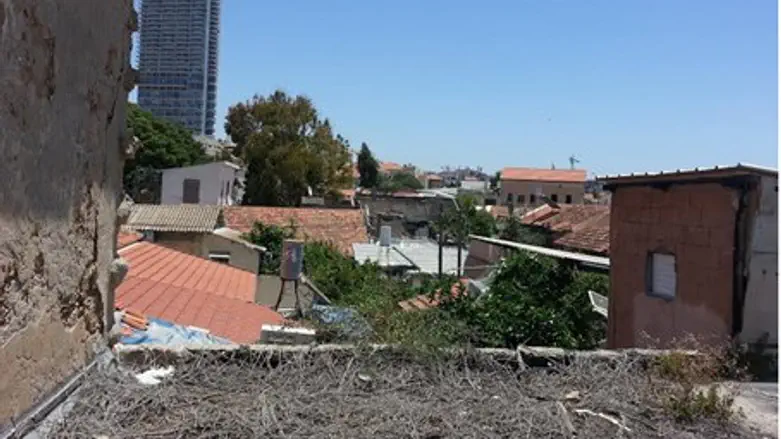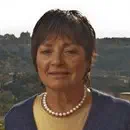
Tel Aviv's Neve Tzedek neighborhood, built in the late nineteenth century near the sands of the Mediterranean shore, was uniquely colorful in that it was a kaleidoscope of social strata, hosting a rich, diverse cultural life. Side by side in the narrow streets stood the homes of both struggling and well-known authors and poets, synagogues filled with devout worshipers, Batei Midrash (study halls) from which the sounds of Torah could be heard night and day, the bustling Neve Tzedek Hotel, crowded soup kitchens for the poor and other community institutions.
These are the streets where Israel's iconic Zionist philosopher-sage, the legendary first Chief Rabbi Avraham Yitschak HaCohen Kook made his home after coming to the Holy Land. Here he penned his vision for the spiritual and physical reestablishment of a Jewish state while serving as rabbi of Jaffa and the surrounding area. Nobel laureate author Shai Agnon described its residents in his works and famed artist Nahum Gutman brought them to life with a loving paintbrush..
But over the years, especially in the decades following Israel’s War of Independence, the picturesque neighborhood and its buildings fell into decay, and many historic buildings were quietly torn down by officials who did not see beyond the profits that could be made by selling the properties..
To compound the problem, as Tel Aviv grew, the neighborhood's now prime location led to a massive real estate investor's invasion. And - the few synagogues and Torah study halls (batei midrash) that survived the first onslaught of speculators are in danger of being sold and demolished due to the high value of the land on which they are situated. Realtor's internet sites promote the attraction of the historic neighborhood for Tel Aviv's trendsetters.
It is too late for the neighborhood’s historic first synagogue, Kehal Hassidim, sold in 2007 by its state custodians (called the Hekdesh) and a private residence built in its place.
The Tel Aviv Yafo Heritage Fund was established two years ago to prevent the neighborhood's entire living history from being destroyed by developers. Ariel Elmaliach is the fund's young, dynamic 33 year old director, a father of six who studied in the nearby hesder yeshiva and now works day and night to save the neighborhood's historic buildings.
Elmaliach arranges fascinating tours of the area guided by National Service volunteers – recounting chapters of early Zionist history in the places where they occurred, bringing the spirit of Rabbi Kook to life to students, adults and tourists - and since this is Israel where every spot is new, old and also ancient, reminding visitors that this is the port from which the Bible says that the Prophet Jonah embarked on his sea journey and to where the Cedars of Lebanon were brought for the Temple, as well as telling IDF recruits of the area's dramatic part in the Maccabean revolt. (see info for ordering at end of article).
I: Saving the Chevrat Shas Synagogue
This synagogue and study hall (beit midrash) were established 105 years ago on Lag B’Omer 5671 (1911) by Rabbi Ze’ev Wolf Greenwald. Rabbi Greenwald, a teacher and author of the Yalkut Sipurim anthology, was known for organizing ongoing Torah lectures (shiurim) in the Neve Tzedek neighborhood.
The courtyard of the synagogue and beit midrash bordered on the home of the brother of Rav Kook, Chief Rabbi of Yafo and the surrounding settlements.
Today there is an active and functioning synagogue here, although years of neglect and poor maintenance have taken their toll and the former glory of the building and its courtyard is only a memory. The historic site desperately needs external and internal preservation work, reinforcement, restoration of the Aron Kodesh, wrought iron and wooden elements, and the murals that once adorned the walls. In recent years, further damage was caused when the neighbors encroached on the property’s west side. Hoodlums and squatters continually attempt to enter the building at night, giving encouragement to those who would like it to be abandoned so that it can be torn down and sold.
The custodians in charge of the synagogue have already managed to sell the historic courtyard on the northeast side to private individuals.
Legal action is being taken to recover the entire area that belongs to the synagogue. Although they have been approached, the Tel Aviv Municipality is not concerned about preserving synagogues, so the fund is attempting to involve the public in Israel and abroad.so as to raise the $400,000 needed for this project.
II: Saving the Rav Kook Compound: Shaarei Torah
The Rav Kook complex, located on the outskirts of the neighborhood and containing several buildings, has suffered the ravages of time. For years, the custodians of this complex planned to sell it, and indeed finally did so in late 2007. The sale appropriated this important cultural compound and placed it in the hands of private developers instead of having it preserved as a national site.
Various public bodies - the Council for the Preservation of Historic Sites, the Synagogue Rescue Committee and the Rosh Yehudi organization tried unsuccessfully to delay the sale, and others petitioned for restrictions on the construction rights at the site and the return of part of the complex to the public, with the intent of preserving the spirit of Rav Kook’s teaching in this place. Last year ago a section of the building collapsed, and had the Council for the Preservation of Historic Sites not intervened, a significant part of the compound would have been destroyed. At this writing, the compound is in private hands, and despite all the many efforts, the developer’s obligation to preserve the site for the public is very general and not at all binding.
It is hard to believe that the property that captures the essence of Neve Tzedek community life since the late nineteenth century, the venue where children learned Torah and a vocation in a trailblazing program, where Rav Kook prayed every morning throughout all his years as the rabbi of Yafo, and from where his spiritual leadership went forth to the rest of Israel and the world, could soon be turned into a shopping area and coffee shop!
Efforts are underway to lobby to save this major foundation stone in the history of the state, and, more crucial, to find a donor to purchase the property from the investor before it is too late. Plans call to open it as a visitors center where the early history of Tel Aviv will be portrayed and have it function as an open house for the community of Neve Tzedek. The cost of purchasing and renovating the entire complex is estimated at several million dollars, so the activists are at this point trying to hold the fort in the hopes that someone will donate enough to at least purchase the property.
Today there is an active and functioning synagogue here, although years of neglect and poor maintenance have taken their toll and the former glory of the building and its courtyard is only a memory. The historic site desperately needs external and internal preservation work, reinforcement, restoration of the Aron Kodesh (holy ark), wrought iron and wooden elements, and the murals that once adorned the walls. In recent years, further damage was caused when the neighbors encroached on the property’s west side. Hoodlums continually attempt to enter the building at night, encouraged by those who would like it to be abandoned so that it can be torn down and sold.
III: The Ohel Yitzchak Chabad Synagogue and Beit Midrash
This synagogue was built in 1903, and the inscription on the dedication plaque memorializes Rabbi Levy Yitzhak and his wife Miryam, who donated 70 “Napoleon” gold francs toward its construction. The walls were decorated with murals painted by artist Gershon Einbond, and the synagogue and beit midrash were the spiritual center for Chabad followers in Yafo.
The building is owned by the municipality, after it won a legal battle over property ownership against Chabad. The building is slated for extensive preservation and has been defined by professionals as an architectural gem, for its exquisite interior woodwork and paintings, but needs a donor who will earmark the funds with the city.
Meanwhile, however, there is no guarantee that the city will wait because there are officials who would prefer it be torn down and used for other municipal purposes. That is why, despite its being owned by the city, the building is not maintained and its condition is worsening by the day. The women’s section has collapsed and its windows have been boarded up. Occasionally, squatters manage to break in and further the destruction of the little that remains.
Ohel Yitzchak was one of the most beautiful Neve Tzedek synagogues and could be restored to its former beauty, used for prayers and opened to the public as is the restored Hurvah Synagogue in Jerusalem.
The city would soon see the benefits to its coffers from local and foreign tourists who would flock to see and learn about historic Neve Tzedek. Israel would be the richer for preserving its Zionist heritage.
For more information, see the Fund's facebook page. To order a tour, call (+972-50-2090051. From Israel 050-2090051.
